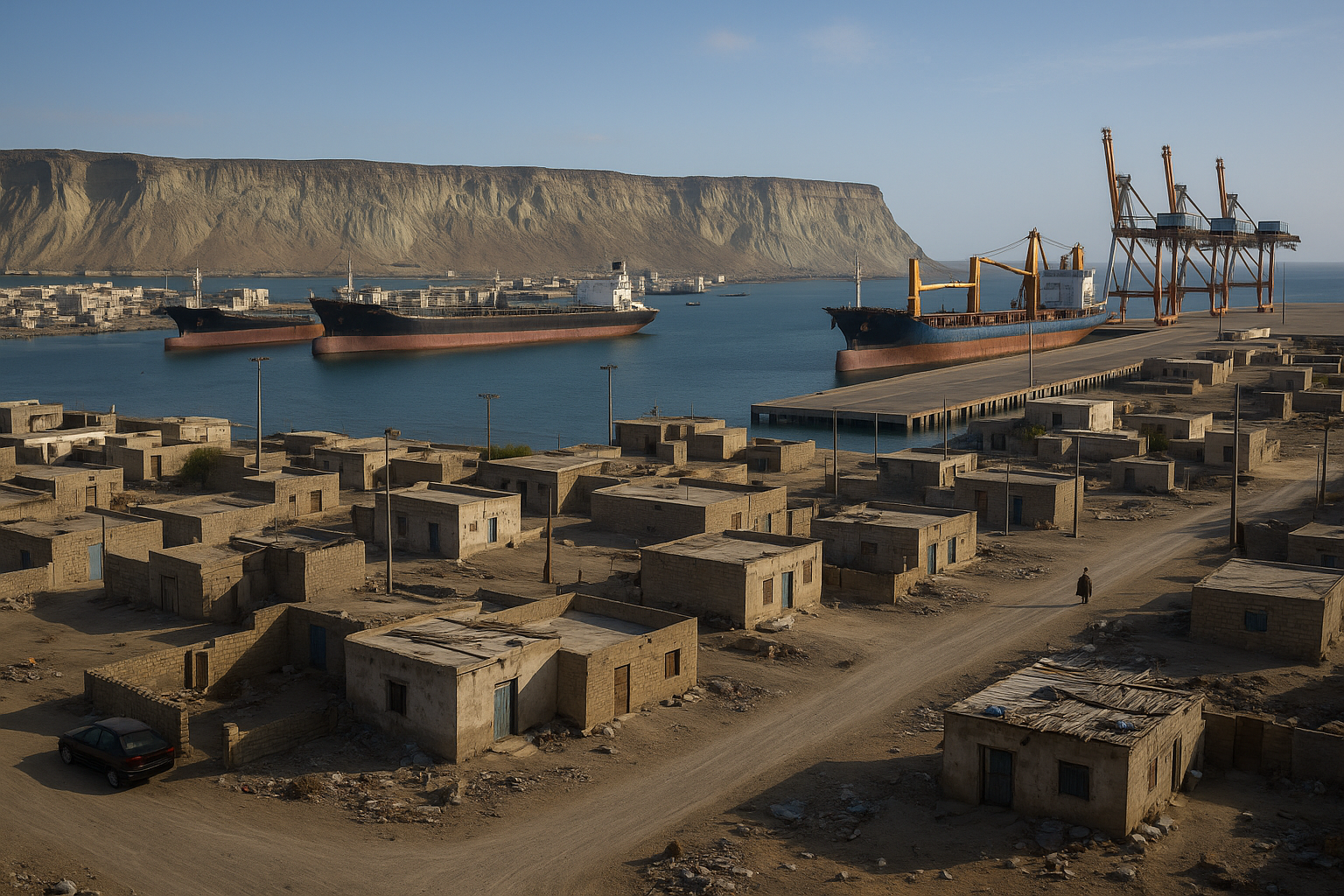Gwadar port’s fast-growing infrastructure of new berths, enlarged container yards, vast free-trade zones, and private logistics centres poses an imperative challenge of governance to the Indian Ocean region’s maritime security architecture. However, beneath this veneer of legitimate development, a disquieting vulnerability exists: the emergence of handling capacity, customs exemptions, and private warehousing has created de facto grey corridors on an unplanned scale that transnational criminal networks can easily exploit with impunity.
The Port’s Sudden Expansion and Oversight Lapses
Gwadar’s transformation has been quick on the surface. With Chinese operation by the China Overseas Ports Holding Company (COPHC), the port was transformed from an inert port into a multi-berth complex with advanced cargo-handling machinery, increased container yards of 10,000 square metres combined, and advanced scanning facilities. The 923-hectare Gwadar Free Trade Zone (GFZ)—tax holiday for 23 years and virtually exempt from customs duties—now opens its doors to firms involved in warehousing, transhipment, and re-exporting activities. The incentives were intended to trigger investment; they have instead inadvertently triggered blind spots in regulation.
Pakistan’s customs inspection system, long plagued by resource shortages and institutional vulnerability, has lagged behind. Although Pakistan authorities recently introduced artificial intelligence-based risk-management systems and identity-blind scanning protocols, ground-level enforcement remains fragmented across multiple agencies—Pakistan Customs, port police, Frontier Corps, and maritime authorities—with coordination gaps that criminal syndicates routinely exploit. The WeBOC (Web-Based One Customs) system, implemented since 2019, represents modernisation, yet audits reveal that a significant percentage of containers still clear inspection without thorough physical verification.
The Narco-Corridor Vulnerability
Balochistan’s geographic location as a transit point for illegal narcotics is not new. For decades, the Golden Crescent of Afghanistan, Iran, and Pakistan have been the world’s major source of opiate production and distribution. About one-third of Afghan drug output moves through Balochistan’s porous frontiers and coastal areas. Historically, these shipments used dhows, fishing boats, and unofficial maritime networks. Today, containerised shipping through Gwadar provides traffickers with a cloak of legitimacy and industrial-scale throughput capacity.
The Drug Enforcement Administration noted that Pakistan absorbs 42 per cent of world heroin flows from Afghanistan for markets in the West. Methamphetamine—now increasingly produced in covert labs throughout Afghanistan and Balochistan—has replaced heroin as the most favoured narcotics commodity in regional trafficking networks. The period between 2019 and 2023 saw law enforcement seizures in the Arabian Sea trace several large heroin shipments directly to Gwadar. These seizures suggest an even greater quantity successfully evading capture.
The Chinese Link and Precursor Supply
China’s role in the global synthetic drug supply chain has been well-documented by Western law enforcement organisations. Chinese chemical producers and unlicensed middlemen operated as the dominant providers of ready-made fentanyl to illegal markets outside China until 2019. After regulatory limits were imposed on the production of fentanyl, Beijing intentionally transformed its business model: Chinese trafficking syndicates and firms now provide fentanyl precursor chemicals—the raw materials for clandestine production—to Mexican cartels and other organised crime organisations.
This shift is noteworthy strategically. As of 2023, the US Treasury Department named a Chinese drug syndicate led by Du Changgen as the group responsible for producing and exporting tons of fentanyl, methamphetamine, and MDMA precursors, with the seized fentanyl and methamphetamine precursors amounting to about 900 kilograms traced to US and Mexican ports. Chinese criminal triads, with franchises tied to the 14K and Fujian organised crime syndicates, now have franchised distribution networks in Asia, Mexico, and increasingly in Africa. These networks exploit China’s massive chemical manufacturing capacity, regulatory laxness, and developed freight-forwarding infrastructure to conceal the origin of illegal consignments.
Gwadar as a Trans-shipment Nexus
The exploitation mechanics are simple. Containers intended nominally for “warehousing” or “light assembly” according to GFZ procedures can be switched within the zone’s large facilities that include several surveillance-blind areas for re-labelling, adulteration, and transhipment. The operational protocol of Gwadar Free Trade Zone allows the movement of goods between the port and duty-free zones with minimal documentary oversight, so long as quarterly returns are submitted ex post facto. Private logistics providers hired by COPHC have wide latitude in container placement and access protocols.
Bonded warehouse regimes, instituted for legitimate purposes of trade, become corridors of liability in settings of institutional vulnerability. Pakistan’s bonded warehouse regime, replicated from Chinese models, mandates that goods are kept under “customs supervision”, but enforcement institutions are underfinanced and afflicted by corruption that pervades the security establishment of Balochistan. Press accounts report that Pakistani security forces collect “taxes” systematically from smugglers in return for safe passage; estimates range from $2–3 billion passing through Balochistan’s narcotic trade routes alone, with security officials seizing substantial amounts.
The Informal Jetty Problem
Gwadar’s official infrastructure conceals an endemic informal economy. Coastal settlements lying alongside the port—Surbandan, Pishukan, Jiwani, and Pasni—retain classic dhow anchorages and unofficial trans-shipment sites. These are functioning outside regulatory architecture altogether. Pakistani Coast Guard and Navy capabilities are still inadequate to effectively patrol Balochistan’s 650-kilometre coast. Dark activity (ships turning off transponders) and suspicious loitering patterns reported in worldwide maritime surveillance systems are becoming more common in Arabian Sea approaches to the Pakistani littoral, indicating a smuggling network adjustment to improved detection tools.
The implications are not simply narco-criminal but geopolitical. If Gwadar becomes a centre for transnational drug trade hiding behind legal business, some implications run through the regional security landscape. Firstly, drug trafficking creates financial streams that fund non-state armed groups, militant groups, and secessionist forces, destabilising Pakistan’s interior. Second, the Indian Ocean drug supply chain is weaponised as an instrument of asymmetric rivalry, with implications for littoral state stability depending on maritime trade and weak governance systems. Third, the precedent of unregulated contraband passage through a Chinese-run port discerdits the legitimacy of Belt and Road infrastructure along Asia and Africa, making partner states increasingly susceptible to penetration by organised crime networks masquerading as legitimate trade.

